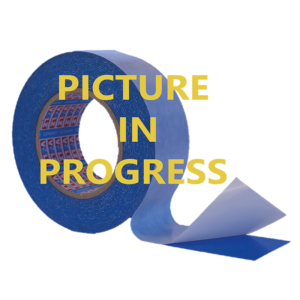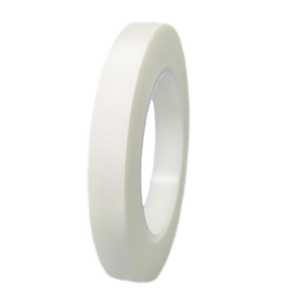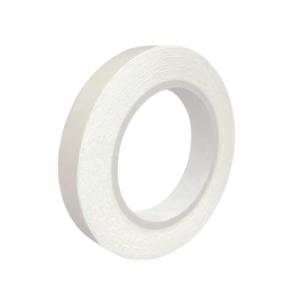volzAcrylicFoam 75050-00 PV1 is a double-sided, high-performance adhesive tape consisting of a self-adhesive, closed-cell acrylic foam. It offers high adhesion for a wide range of applications. The tape is a very good sealant and bonding tape and is available in different thicknesses. The product is completely silicone free.

Applications
- Bonding of profiles of various materials
- Bonding of exterior trims, badges, emblems, spoilers, roof planking and frame constructions, interior trims, mirrors, skylights, lighting elements, floor protection trims, etc.
- Mounting of signs, screens, scales, etc. made of various materials
- Bonding of glass, transparent plastics, etc.
- Edge and frame bonding, as well as other applications in solar technology
- Used in the construction of glass partitions, windows, doors and the manufacture of safety glass
Used in applications where almost invisible bonding is required
Benefits
- Excellent load capacity and performance characteristics
- Unlike screws, nuts and bolts, no metal fatigue and no mechanical degradation
- Vibration and shock absorbing properties
- Complete water, dust and air sealing
- Thermal expansion and cold contraction are absorbed by the highly conformable, viscoelastic adhesive tape
- Compared with other adhesive joints, less labor and time required for touch-ups and cleaning
- The sheet does not warp when used in place of spot welding - no welding beads to be ground off
The Rolls should be stored in their packaging protected from light and at a temperature between 15°C to 24°C, with a relative humidity of 50% +/- 30%. When using an adhesive tape stored below 15°C, it is advisable to keep the tape at room temperature for 24 hours to preserve its characteristics.
| Manufacturer | VOLZ® |
|---|---|
| Backing | Acrylic Foam |
| Adhesive Type | Acrylic |
| Total Thickness | 0,50 mm, (± 0,05mm) |
| Color | Clear (00) |
| Liner | PE Film, (red) |
| Adhesion to Steel | 32,50 N/25 mm (20 min. Raumtemperatur), 47,50 N/25 mm (72 min.Raumtemperatur) |
| Tensile Strength | 200,00 N/25mm, (T‐Block Test) |
| Static Shear | ≥ 10.000 Min (90° bei 500 g) |
| Temperature Resistance | ‐40°C to +150°C (short‐term), +90°C (long‐term) |
| Length | 33 m, standard, other lengths and cross wound spools upon request |
| Width | 4 mm – 450 mm, other widths upon request |
| Storage Life | The material can be stored at room temperature for at least 12 months. |
| Density | 900 kg/m³ (± 50) |
| Slitting Tolerance | Length < 33m = ± 0.4mm (± 1/64"), Length > 33m = ± 0.8mm (± 1/32"), Smaller tolerances are available upon request and may be subject to an additional charge, Cross-wound spools are excluded from the above tolerances |
Benefits
- Excellent load capacity and performance characteristics
- Unlike screws, nuts and bolts, no metal fatigue and no mechanical degradation
- Vibration and shock absorbing properties
- Complete water, dust and air sealing
- Thermal expansion and cold contraction are absorbed by the highly conformable, viscoelastic adhesive tape
- Compared with other adhesive joints, less labor and time required for touch-ups and cleaning
- The sheet does not warp when used in place of spot welding - no welding beads to be ground off
Application Instructions
- Ensure that the surfaces to be bonded are completely clean and free from dust and grease
- The best cleaning medium is a solvent such as Isopropyl alcohol applied with a clean cloth or tissue
- The adhesive is pressure-sensitive and the best results are achieved with maximum surface contact under pressure
- Avoid significant load-bearing to the bond directly after application
- Minimum application temperature should not be below +10°C, (unless using the 3 series tapes, which accommodate lower application temperatures)
- The surfaces to be bonded should be dry and free from any loose particles
- To attain the optimum bond, sufficient pressure should be applied to the surface area to be bonded. To ensure good adhesive “wet out” typical pressure should be 15PSI+100KPA
- 50% of bond strength is attained after 20 minutes. 90% of the optimum bond strength will be achieved after 24 hours. 100% is achieved after 72 hours
- Recommended application temperature, +20°C to +36°C
- Certain Surfaces will require priming or sealing such as porous surfaces – plaster and concrete, also absorbent surfaces such as untreated wood and fabrics
- Metals with oxidized surfaces such as aluminum, copper, and brass may need priming or abrading. Low energy surfaces such as Polypropylene plastics containing aggressive plasticizers may also need treatment


